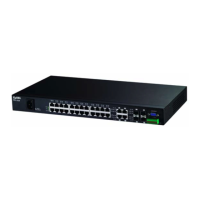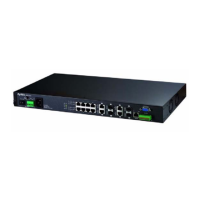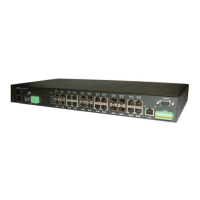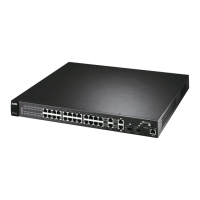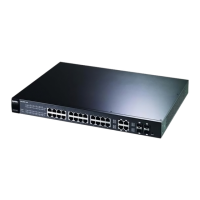Chapter 1 Getting to Know Your MSC
Management Switch Card User’s Guide
48
LAN 2 LAN
LAN 2 LAN allows you to control whether or not a DHCP server connected to a subscriber port is
permitted to receive and send traffic through the IES.
Anti-IP Address Spoofing
With DHCP snooping, a line card records which IP address is assigned to each DHCP client MAC
address and the VLAN to which each IP and MAC address pair belongs. The line card drops packets
from a device using an IP address that is assigned to a different MAC address.
ARP Inspection
ARP inspection drops ARP packets if the MAC address to IP address binding does not match that of
a learned or manually added trusted client. This prevents many common man-in-the-middle
attacks.
Upstream Broadcast Storm Control
Broadcast storm control lets you set limits for how many broadcast, multicast and destination
lookup failure (DLF) packets a port receives per second from the subscriber.
Downstream Broadcast VLAN Control
Downstream broadcast VLAN control allows you to block downstream broadcast packets from being
sent to specified VLANs on specified ports. This helps to reduce downstream bandwidth
requirements on a subscriber line.
Queuing
Queuing is used to help solve performance degradation when there is network congestion. Two
scheduling services are supported: Strict Priority Queuing (SPQ) and Weighted Round Robin (WRR)
Queuing. This allows the MSC to maintain separate queues for packets from each individual source
or flow and prevent a source from monopolizing the bandwidth.
Trunking
The management switch card can trunk (aggregate port links into one logical link) Gigabit Ethernet
interfaces.
Isolation (per-VLAN)
Use isolation to block the DSL subscribers in a specific VLAN from sending traffic directly to each
other. The DSL subscribers can only send and receive traffic to and from the ports that are set to
uplink mode. The Integrated Ethernet Switch blocks access between the DSL ports.
Link Aggregation Control Protocol (LACP)
The MSC supports the link aggregation IEEE 802.3ad protocol. Link aggregation (trunking) is the
grouping of physical ports into one logical higher-capacity link. You may want to trunk ports if for
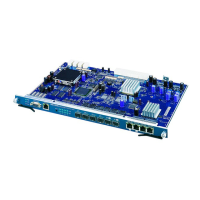
